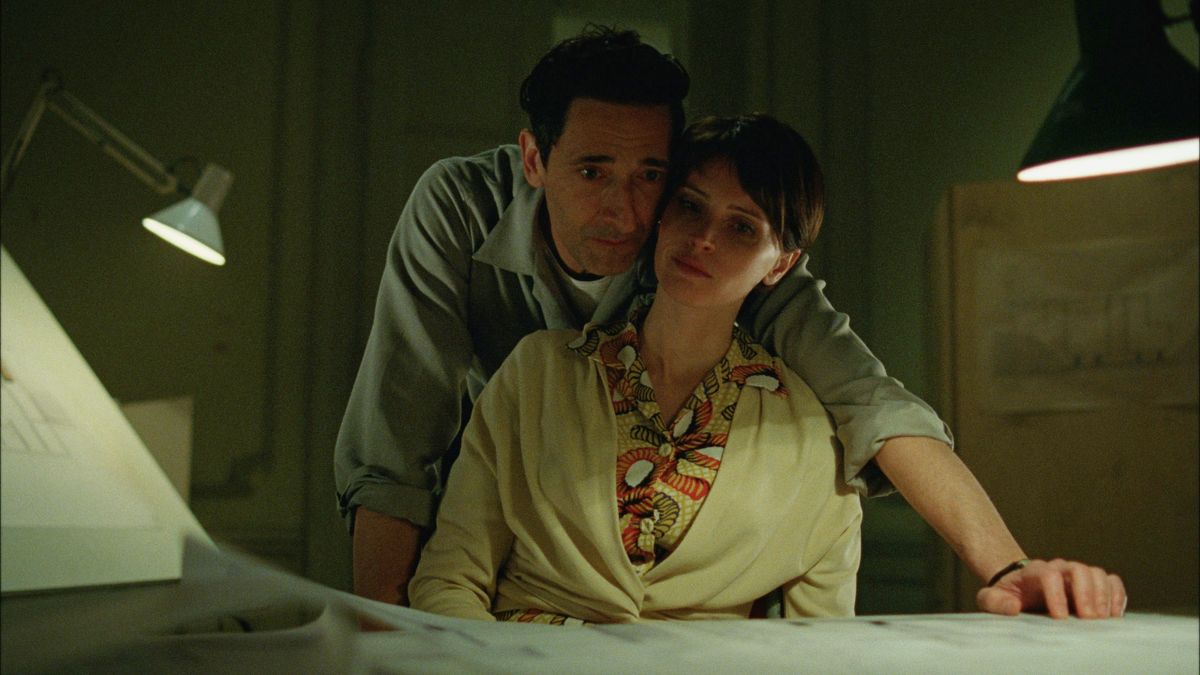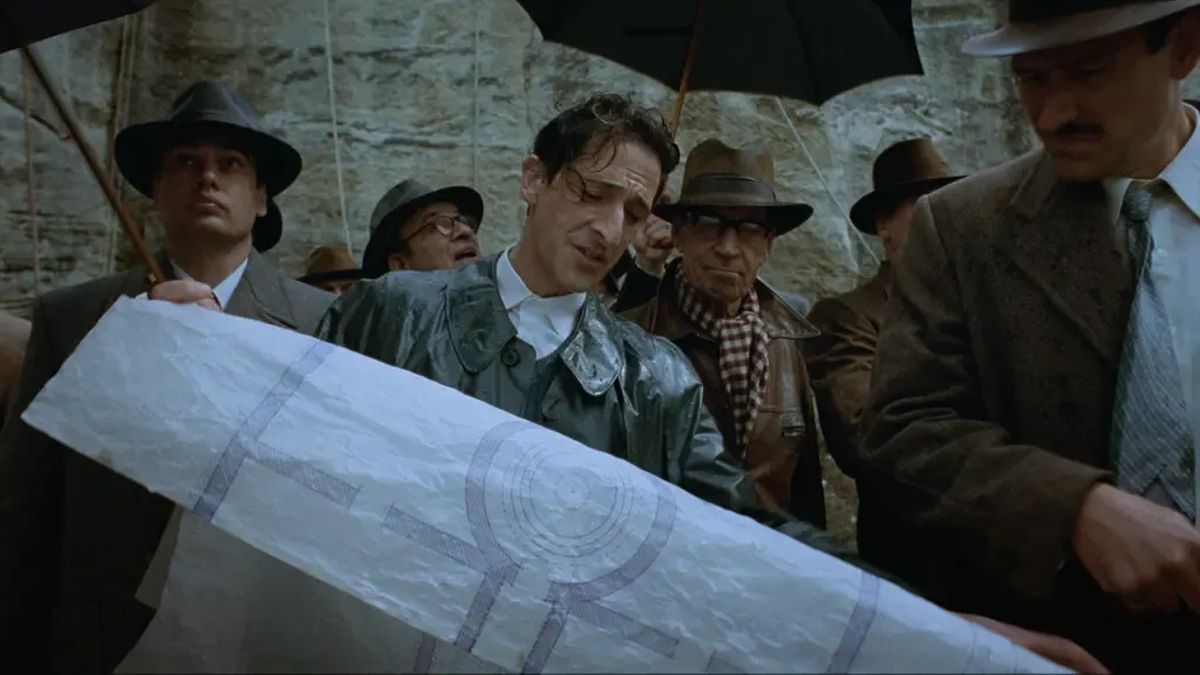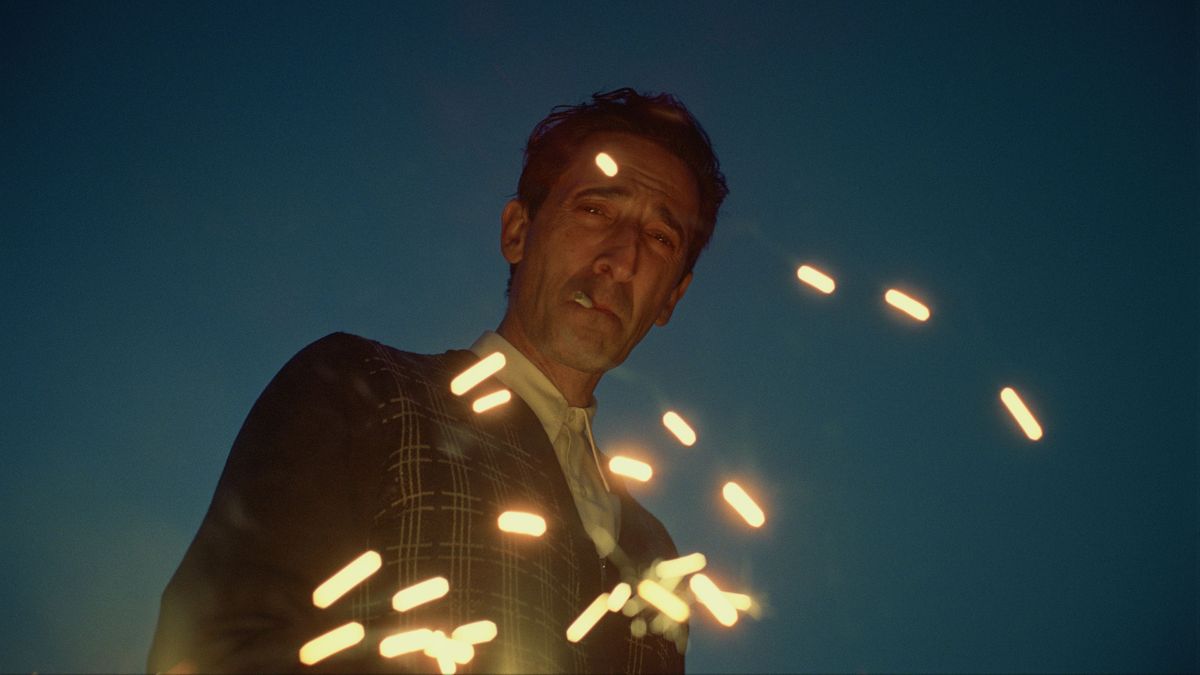Spoiler Warning: The following article has some major spoilers for The Brutalist. If you’ve yet to watch the Golden Globe-winning drama, please exercise extreme caution, or come back after watching it.
The Brutalist was one of the best movies of 2024, and honestly one of the best theatrical experiences I’ve had since I saw There Will Be Blood like five or six times 17 years ago. I was lucky enough to catch a pre-release screening back in November, and ever since then, I’ve been waiting for my chance to see Brady Corbet’s $10-million epic again. That opportunity presented itself shortly after the start of the new year, and as wild as it sounds, I loved it even more the second time around.
The whole three-and-a-half-hour epic about Adrien Brody’s Jewish Hungarian immigrant chasing the American Dream and starting an ambitious and decade-spanning project was so impressive, emotional, and epic, but two scenes in particular were even more powerful on a second viewing. I just have to talk about the experience and how I have a greater appreciation for The Brutalist’s ending.

I Can’t Get Over Erzsébet’s Strength And Anger While Confronting Harrison
Similar to how revisiting Conclave made for a better experience, especially when it came to everything before the shocking papal ending, watching The Brutalist a second time allowed me to enjoy the moment instead of anticipating what was coming next. This is incredibly true for the scene where Erzsébet Tóth (Felicity Jones) confronts Harrison Van Buren (Guy Pearce) about the wealthy industrialist raping her husband earlier in the movie after years of emotional and mental abuse during the construction of the community center.
Don’t get me wrong, the scene was powerful, raw, and moving the first time around, but I noticed something that I didn’t even think of during my first viewing: this is the only scene in the movie where Erzsébet uses a walker instead of a wheelchair. My interpretation of this key scene is that Erzsébet, who has decided to leave America for Israel with her husband, is so consumed by anger that she builds the strength to not only walk again but confront the man who took everything from her partner and belittled him into a shell of a man.
If Felicity Jones is nominated for an Oscar (I’m convinced she’ll receive a Best Supporting Actress nod), this will be the scene playing during the Academy Awards. It’s that powerful and monumental.

The Epilogue, With The ‘It Is The Destination, Not The Journey’ Speech Brought Me To Tears
I have to admit that the shift to the epilogue in The Brutalist was so jarring the first time around I missed a lot of it. In case you forgot, after Erzsébet confronts Harrison, who disappears and is presumed to have killed himself, the movie jumps from the late 1950s to 1980 where we are transported to a retrospective of László Tóth’s work held in Venice. During the presentation, his niece, Zsófia (Ariane Labed) talks about his work and the inspiration behind it, which boils down to his experience surviving the Holocaust and years-long quest to reunite with his wife.
I couldn’t help but cry throughout the scene where Zsófia talks about the massive Van Buren Community Center, seen multiple times in The Brutalist’s trailer, being designed to resemble the two concentration camps where László and Erzsébet were imprisoned during World War II. All those little details, which seemed random or unnecessary without the proper context, were actually part of a permanent monument to their love and reminders of the suffering they endured all those years ago.
The last line – “No matter what the others try and sell you, it is the destination, not the journey” – broke me and left me sitting in tears as the credits began to roll.
Truth be told, I’ll end up watching The Brutalist at least one more time in the theaters, maybe more, because there’s just so much to love about one of the best A24 movies in quite some time.
